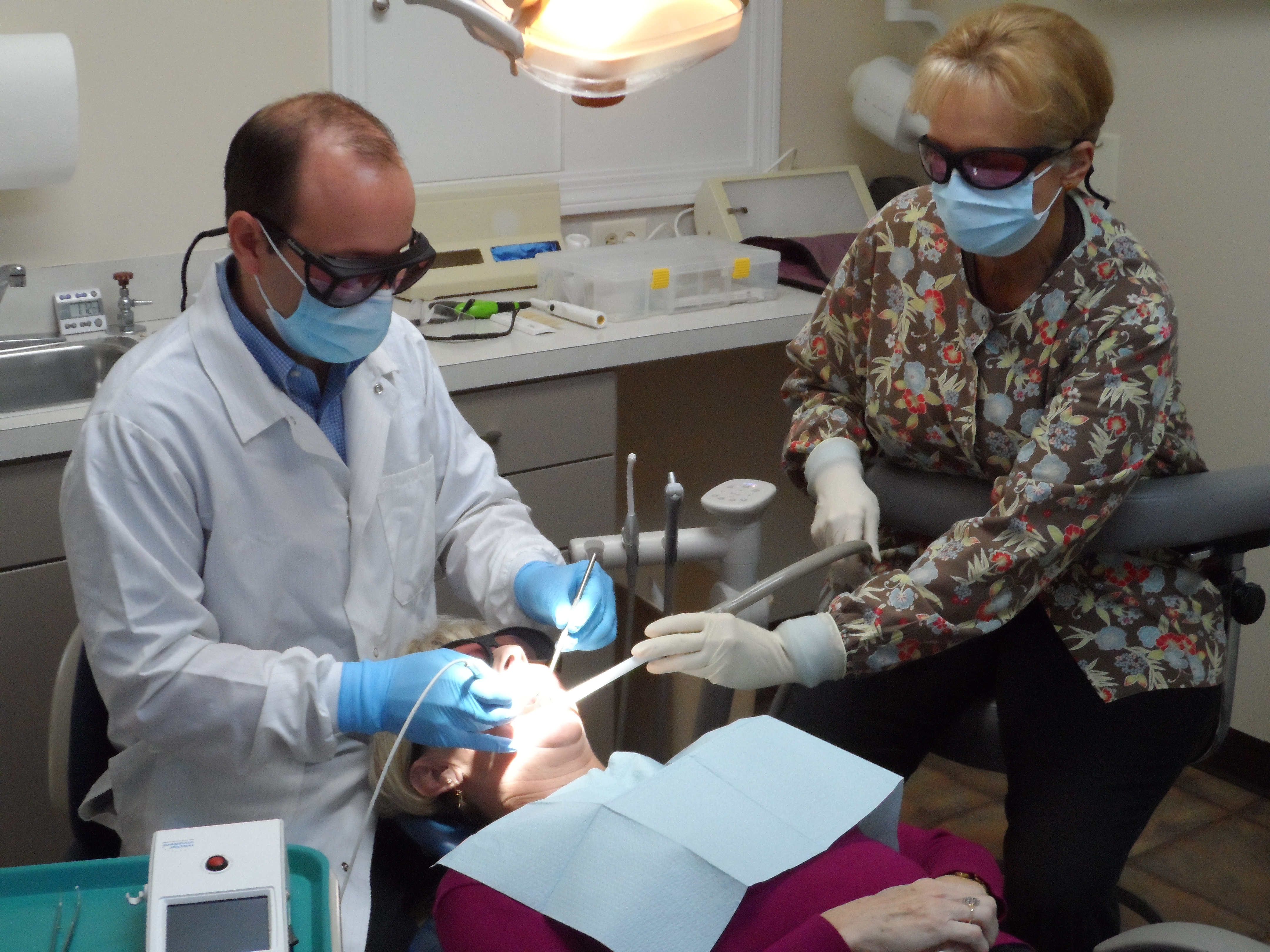ADVANCED PROCEDURES DIGITAL 3D SCANNING Our office uses a Carestream scanner to take digital impressions for crown, bridge and implant procedures. This technology eliminates the need for uncomfortable impression taking. The result is a highly accurate impression and minimal adjustments during placement of restorations. LASER DENTISTRY Our office uses a diode laser for minor surgical procedures. Using lasers reduces pain and bleeding involved in minor surgical procedures. Diode lasers can also be used to treat pain from canker sores and ulcerations. CROWNS It takes two appointments to restore a tooth with a crown. In the first, any decay is removed from the tooth and it is shaped to accept the crown. Then an impression is made of the tooth for use in fabricating a crown. The crown is made between the two visits. It is made with either high-strength porcelain over gold alloy, all ceramic material, or gold. Also during this time, a temporary crown is worn. In the second visit, the temporary crown is removed, and the permanent crown is adjusted as needed and then cemented in place. DENTURES There are two ways this can be done. The first involves removing all teeth in the arch and allowing complete healing before impressions are made and dentures are fabricated and delivered. The result is the best fit at the time of delivery but requires that the patient will endure a period of time without teeth in the arch. The second procedure allows for immediate denture delivery at the time of extractions. This technique eliminates the waiting period for the replacement teeth but requires additional procedures after healing to refit the dentures. Follow-up is necessary in both instances including yearly exams to evaluate overall continuing oral health. IMPLANTS Implants can also be used as support as part of an implant bridge. This is an alternative to partial dentures, and has several advantages. First, there is no adjustment period to acclimate the patient who, once the work is done, only feels teeth, not metal supports intruding into the mouth. Second, this slows the bone loss occasioned by missing teeth. Third, there is no discomfort or difficulty in eating. And, best of all, of course, they are not removable.
ROOT CANAL TREATMENT A root canal is then performed to clean out the infected tooth pulp and to disinfect the canals of the tooth. The only other treatment would be to extract the tooth. Once the infection is resolved, the canal(s) are filled in to prevent any further infection. A core build-up and crown is usually recommended for restoring a tooth that has had root canal therapy. BRIDGES It is important that a missing tooth be replaced as soon as possible for several reasons. If not treated the teeth surrounding the gap begin to shift inward, creating a whole chain reaction of bad things. Teeth use their neighbors for support, and, with one missing, they start to "fall." As this worsens the bite changes in response to the pressure. This can eventually result in problems with the entire jaw, e.g. TMJ. The surrounding teeth deteriorate and it is just a matter of time before they, too, are lost. Gum disease becomes a serious problem, with the difficulty of treatment increasing as the neglect continues. TMJ TREATMENTS Problems in this area can cause:
Dental treatments for the condition can include replacing missing teeth, moving teeth, adjusting the bite, filling gaps between teeth, etc. There is no one solution that is right for all cases. Sometimes a plastic mouthpiece is used to prevent clenching or grinding that is contributing to the problem. If untreated and taken to extremes, surgery may be required to repair a badly damaged joint. |
Nashua, NH 03060
(603) 882-2660

